How Data Is Improving Norwegian Waste Management
It’s hard to know how quickly bins fill up and when waste should be collected. And seasonal ups and downs as well as general changes to the way we live and work are making efficient waste collection even trickier. We can’t predict the future, but data can help us stay one step ahead.
Data is proving to be essential to efficient and sustainable waste services. With today’s ever-changing waste behavior and patterns, it’s almost impossible to collect waste at the right time without going digital.
Like the rest of Europe, Norway is in the process of transitioning to more circular and sustainable waste models. In addition, the country has a particular waste management setup, with fjords, mountains, smaller roads, and generally fewer people per square kilometer. And all of these factors can make optimizing waste services a rather complex process.
The traditional way of dealing with waste often leads to more waste – wasted resources, carbon emissions, and time due to too early or too late collections. A modern, data-driven approach can optimize waste management, leading to a reduced carbon footprint and a leaner operational setup. And that’s exactly what Norwegian municipalities are experiencing after embarking on a smart sensor journey.
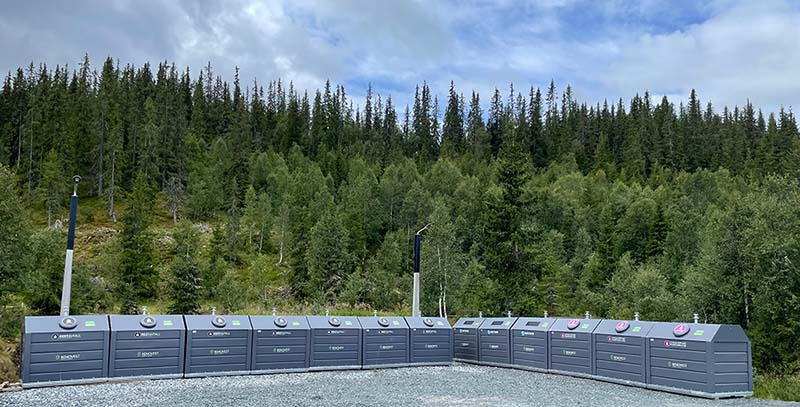
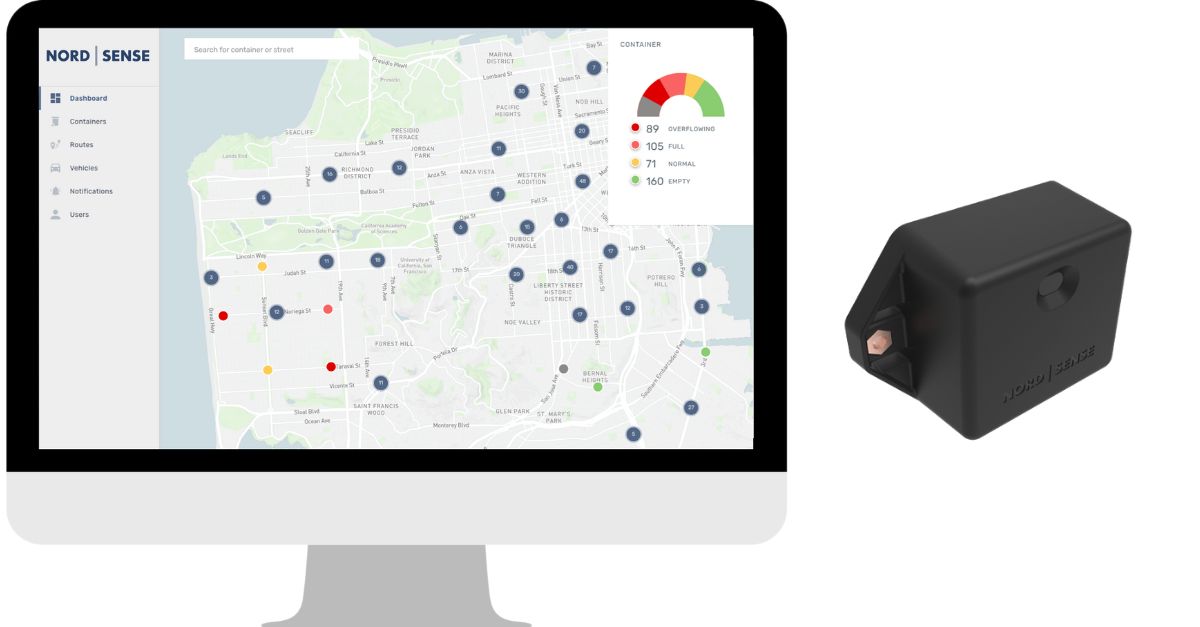
How Does Data-Driven Waste Management Work?
Smart sensors measure various data points in your bins, providing information on fill levels, temperature, and movements. These measurements are carried out at 15-minute intervals, providing detailed and accurate reports on your bins and their contents.
The sensors are connected to an online platform that enables you to monitor your bins and their pickups. The platform includes in-depth reports and actionable insights on your collection services and waste generation patterns, helping you improve your efficiency and become more sustainable.
Optimizing Centralized Collection Points
The usage of centralized collection points is highly seasonal and weather-dependent, which makes it difficult to predict when bins will fill up. Historical trends are unreliable, and there is no way of knowing how much waste will be generated in these areas without access to real-time data.
This summer, a Norwegian municipality discovered that their collection points were not being serviced efficiently. In fact, 27% of all of their waste services could have been skipped.
The data showed that bins were not being serviced at the right time. Some areas were not as busy as expected. For example, almost ¾ of collections occurred too early at collection points 1 and 2, popular leisure hotspots by the water. This meant unnecessary driving, carbon emissions, resources, and costs to empty these bins.
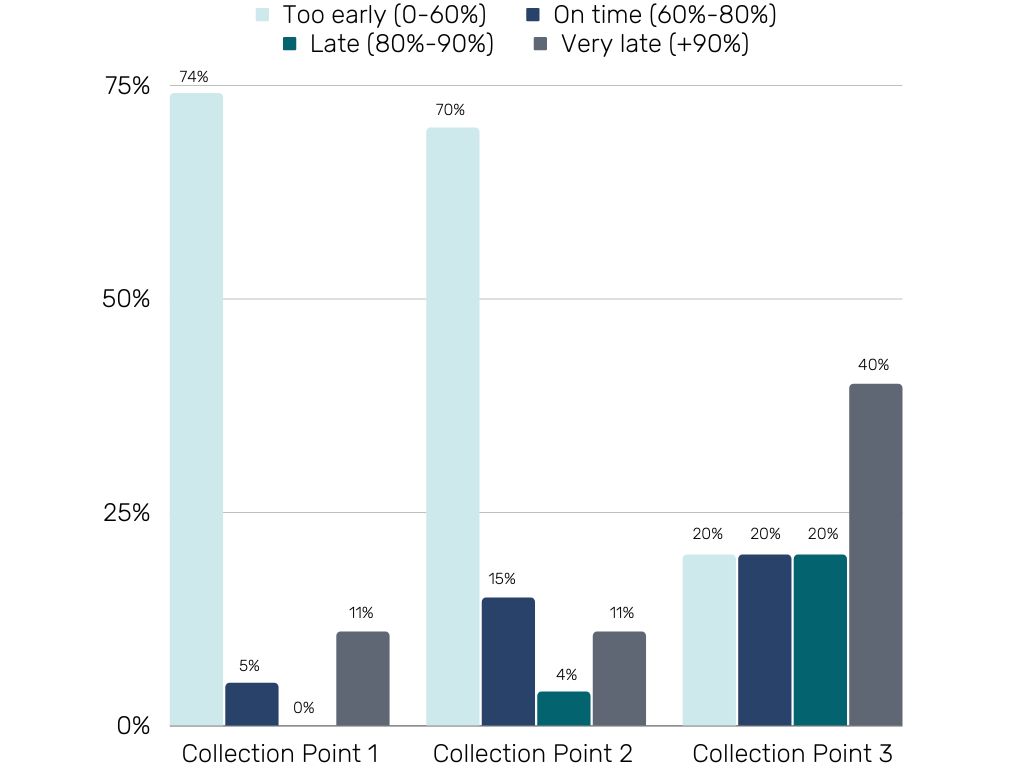
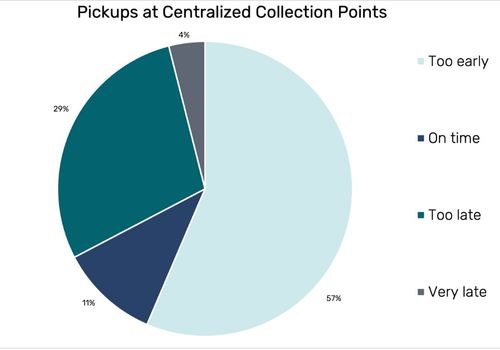
On the other hand, some areas were busier than expected. Collection point 3, which is located by a school, experienced overflowing bins and late collections 60% of the time, despite it being the height of summer vacation.
Centralized collection points that serve cabin areas also experience unpredictable bin usage. Located far from cities and waste disposal sites, servicing these bins often requires more driving. Data from this cabin area showed that 38% of services were collecting air. During the summer period, bins were only ⅔ full and the majority of collection services were happening too early.
Waste volumes can build up quickly in peak periods, so a static approach to bin services often falls short. At the same time, the remoteness of these areas means that waste collectors have to drive long distances to service bins. This makes the cost of waste collection higher – both in terms of finances, resources, and carbon emissions.
Using Data to Stay Ahead of Recycling Behavior
Achieving recycling goals requires a thorough understanding of how people use their bins. Data can help you get to grips with people’s waste habits so you can change behavior to increase recycling participation rates while ensuring cost- and carbon-efficient collections.
In a large Norwegian city, sensors showed that over ¾ of glass recycling containers were serviced too early. In fact, the data showed that 41% of services could be skipped and that bins were less than 50% full on average.
These insights are empowering the municipality to reduce their collection services, helping them cut down on the number of vehicles on the road and their carbon footprint. The data also helps them understand recycling behavior on a local level. By tracking the fill levels of recycling containers, the city can optimize bin placements, moving bins around to make recycling more convenient.
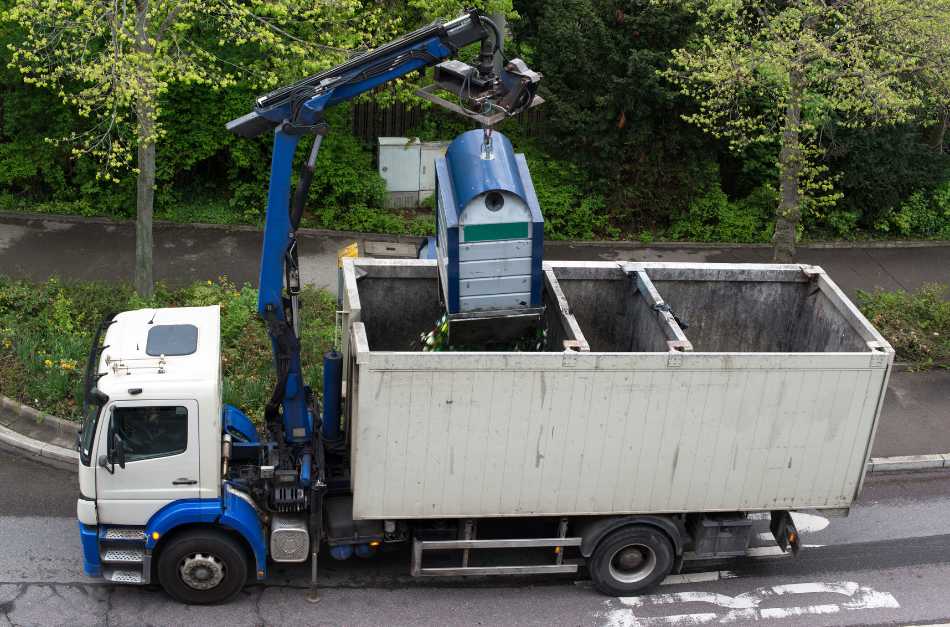
Navigate the Unknown with Data
Although rural and urban areas have differing waste habits and behavior, they share the same need: timely, efficient, and sustainable waste collection. And in Norway, this process is even more challenging due to its complex landscape and nature. Data empowers you to understand exactly when each bin requires servicing, which bins require better placement, and how to take measures to improve recycling. Smart sensors can equip you with the necessary knowledge to achieve this in the face of seasonal highs and lows, unpredictable waste behavior, and unforeseeable events.
Greener, Cleaner, Smarter Waste Management